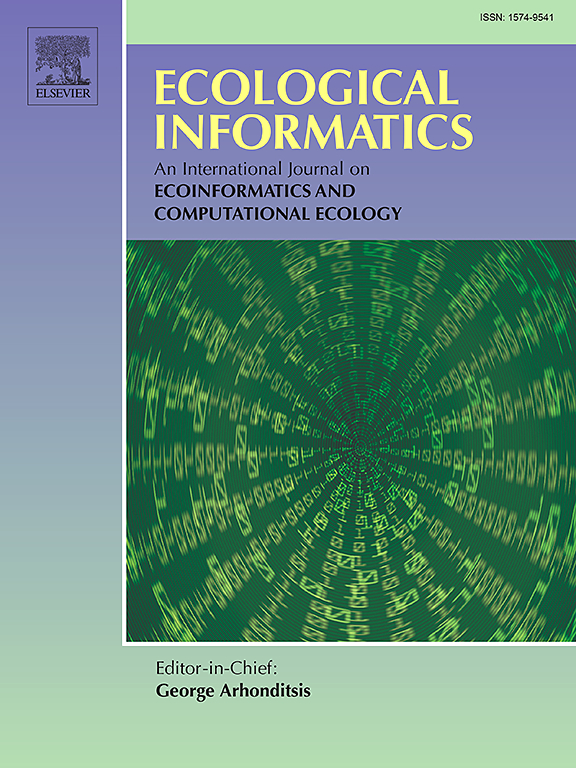瘤胃健康量化:动物科学曲线下面积和时间的统计综述及应用
IF 7.3
2区 环境科学与生态学
Q1 ECOLOGY
引用次数: 0
摘要
曲线下面积(AUC)和曲线下时间(TUC)的概念,以及它们的补充曲线上面积(AAC)和曲线上时间(TAC),为量化各种科学学科的时间动态提供了一个强大的统计框架。这些指标将复杂的、依赖于时间的现象提炼成可理解的值,从而能够对不同的过程进行详细的比较。本文探讨了这些方法的理论基础,并将其应用于反刍动物健康、福利和生产力的关键指标——瘤胃pH分析。本文介绍了曲线上下面积和时间(Area and Time of The Curve, ATAUC)算法,这是一种基于r的综合工具,用于分析来自多个传感器的连续时间序列数据。回顾了梯形和辛普森规则等传统方法,以及更好地处理不规则数据和复杂曲线行为的样条插值等先进方法。ATAUC集成了稳健的阈值分析,平滑功能的传感器过渡,和先进的统计摘要,以确保准确和可重复的测量,即使在采样不规则或传感器漂移的存在。通过将ATAUC应用于瘤胃酸中毒的研究,本文证明了AUC和TUC指标在捕获相对于临界阈值的pH波动的强度和持续时间方面的效用。这些见解使研究人员和从业人员能够评估喂养策略,诊断代谢紊乱,并优化动物管理实践。基于auc的指标,由ATAUC算法支持,为实时监控和决策提供可扩展和实用的解决方案。这项研究强调了先进的AUC和TUC方法在解决动物科学和其他领域的挑战方面的相关性。通过将这些方法与先进的数据处理技术(如机器学习和预测建模)相结合,更广泛应用的潜力变得显而易见。研究结果强调,这些方法不仅对量化瘤胃健康有价值,而且对理解和管理跨学科的复杂生物系统也有价值。像ATAUC这样强大的分析框架的整合为反刍动物系统提供了改进决策、提高生产力和更大福利的途径,同时也为科学和工业中其他与时间相关的现象提供了适用的见解。本文章由计算机程序翻译,如有差异,请以英文原文为准。
Quantifying ruminal health: A statistical review and application of area and time under the curve in animal science
The concepts of area under the curve (AUC) and time under the curve (TUC), along with their complements area above the curve (AAC) and time above the curve (TAC), provide a powerful statistical framework for quantifying temporal dynamics across various scientific disciplines. These metrics distill complex, time-dependent phenomena into comprehensible values, enabling detailed comparisons of diverse processes. This paper explores the theoretical foundations of these methods and applies them to ruminal pH analysis, a critical indicator of ruminant health, welfare, and productivity. The paper introduces the Area and Time Above and Under the Curve (ATAUC) algorithm, a comprehensive R-based tool designed for analyzing continuous time-series data from multiple sensors. Traditional approaches like the trapezoidal and Simpson's rules are reviewed, alongside advanced methods such as spline interpolation, which better handle irregular data and complex curve behavior. ATAUC integrates robust threshold analysis, smoothing functions for sensor transition, and advanced statistical summaries to ensure accurate and reproducible measurements even in the presence of sampling irregularities or sensor drift. By applying ATAUC to the study of ruminal acidosis, the paper demonstrates the utility of AUC and TUC metrics in capturing the intensity and duration of pH fluctuations relative to critical thresholds. These insights allow researchers and practitioners to evaluate feeding strategies, diagnose metabolic disorders, and optimize animal management practices. AUC-based metrics, supported by the ATAUC algorithm, enable scalable and pragmatic solutions for real-time monitoring and decision-making. This study underscores the relevance of advanced AUC and TUC methodologies for addressing challenges in animal science and beyond. By combining these methods with advancements in data processing, such as machine learning and predictive modeling, the potential for broader applications becomes evident. The findings emphasize that these approaches are not only valuable for quantifying ruminal health but also for understanding and managing complex biological systems across various disciplines. The integration of robust analytical frameworks like ATAUC provides a pathway for improved decision-making, enhanced productivity, and greater welfare in ruminant systems while offering insights applicable to other time-dependent phenomena in science and industry.
求助全文
通过发布文献求助,成功后即可免费获取论文全文。
去求助
来源期刊

Ecological Informatics
环境科学-生态学
CiteScore
8.30
自引率
11.80%
发文量
346
审稿时长
46 days
期刊介绍:
The journal Ecological Informatics is devoted to the publication of high quality, peer-reviewed articles on all aspects of computational ecology, data science and biogeography. The scope of the journal takes into account the data-intensive nature of ecology, the growing capacity of information technology to access, harness and leverage complex data as well as the critical need for informing sustainable management in view of global environmental and climate change.
The nature of the journal is interdisciplinary at the crossover between ecology and informatics. It focuses on novel concepts and techniques for image- and genome-based monitoring and interpretation, sensor- and multimedia-based data acquisition, internet-based data archiving and sharing, data assimilation, modelling and prediction of ecological data.
 求助内容:
求助内容: 应助结果提醒方式:
应助结果提醒方式:


